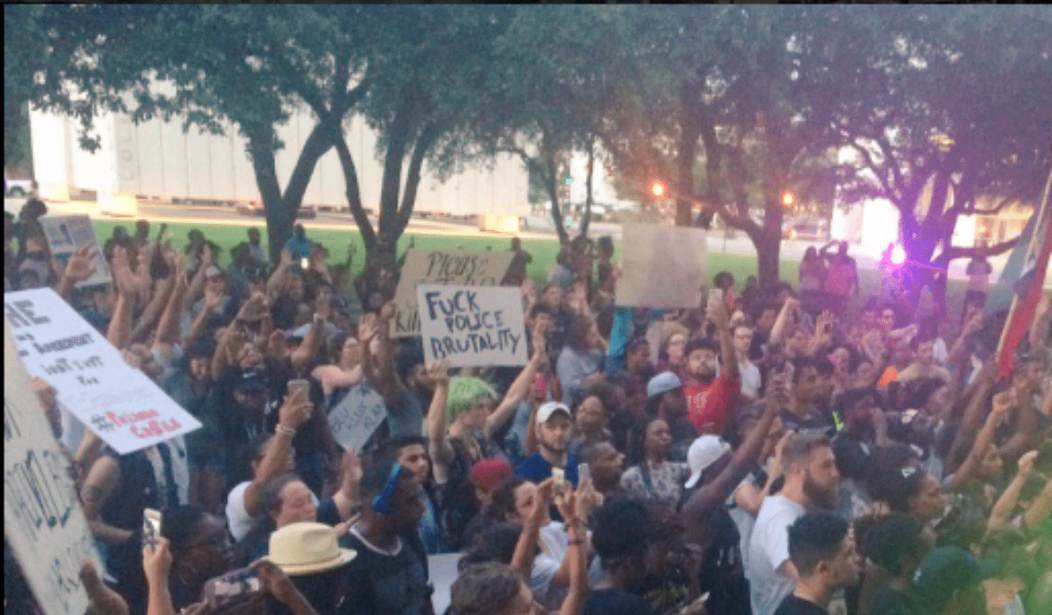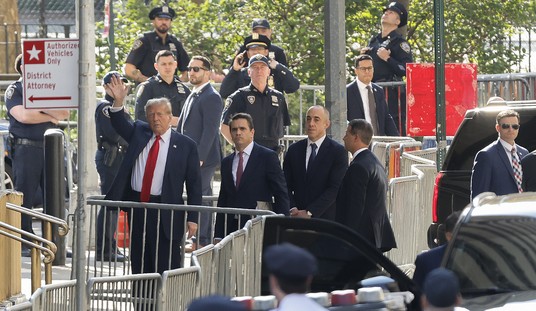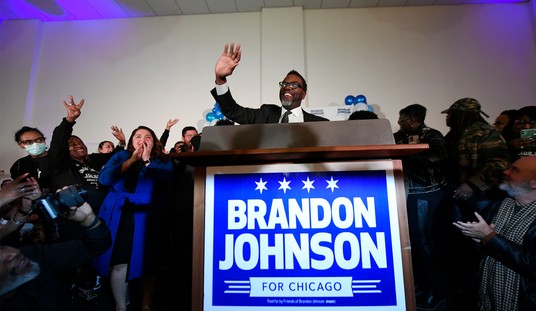The tragic shooting of twelve police officers and the murder of five by snipers in Dallas, Texas, on Thursday night seems to confirm an argument against the Black Lives Matter movement — namely that protests against the police foment a culture that endangers their lives and undermines the public’s belief in law and order.
A new book by Heather Mac Donald presents a very sophisticated argument. The War on Cops: How the New Attack on Law and Order Makes Everyone Less Safe presents evidence of a spike in crime over the past few years coinciding with the growing movement against police brutality as a symptom of racism against black people. A few police have been tragically killed by rioters, but the biggest result Mac Donald focuses on is the crime uptick.
Mac Donald discusses the “Ferguson Effect,” the idea that police, demonized as racist, do not keep law and order to the extent that they otherwise would have. She argues that the “Broken Window policing” of the 1990s and 2000s helped create the drastic decrease in crime and that movements like Black Lives Matter have now convinced cops to stop cracking down on petty crimes, leading to an increase in crime overall.
How does this connect to the Dallas shootings? There may not be a direct connection, but one police decision which was meant to be friendly may have ended up becoming fatal. “The approximately 100 officers working at the protest were not wearing riot gear after deciding to take a friendlier approach to working with protesters,” Today.com reported.
It is impossible to entirely know whether the five police officers who died on Thursday night would have survived if they had been wearing riot gear, but the fact they weren’t does suggest a few questions along those lines. Was the anti-police culture to blame, not just for motivating the prime suspect, but for the officers’ deaths as well? How many police would have died, and how many serious wounds would have been minimized, had the cops worn riot gear?
The prime suspect, Micah Xavier Johnson, died in a standoff with officers on Friday morning. According to NBC Dallas-Fort Worth, Johnson told police he was upset by recent police shootings and “wanted to kill white people.” He also “told negotiators the end is coming,” that gunmen were “going to hurt and kill more of us,” and that “there are bombs all over the place in the garage.”
The kind of hatred against white people and police in particular that Johnson displayed has been stoked by the Black Lives Matter movement. To be clear, most of those in this movement do not support the senseless murder of police officers or white people, but the racial hatred against the police is the centerpiece of Mac Donald’s book, and it is important to consider it in detail.
Andrew McCarthy at National Review made the connection to Mac Donald’s book. He quoted liberally a passage from the book, recalling that “in the summer of 2014, … a lie overtook significant parts of the country and grew into a kind of mass hysteria. That lie holds that the police pose a mortal threat to black Americans– indeed, that the police are the greatest threat facing black Americans today.”
Mac Donald spends a great deal of time discussing the shooting of Michael Brown in Ferguson, Mo., and noting that the FBI report backed up officer Darren Wilson’s story. Nevertheless, politicians like Barack Obama and news outlets like The New York Times emphasized racism as the cause behind the shooting, covered the city of Ferguson as if it was driven by racism, and justified the resulting anger at the justice system.
“The poisonous effect of these lies manifested itself in the cold-blooded assassination of two NYPD officers in December that year,” Mac Donald explained. The shooter claimed that he killed the officers in retribution for the death of Eric Garner, The New York Post reported at the time.
Mac Donald acknowledged in her book that Garner’s death was tragic, and police probably used excessive force against him, but insisted that New York cops enforcing petty crimes like the illegal selling of cigarettes are helping to maintain law and order.
“No stronger proponents of public-order policing exist than law-abiding residents of high-crime areas,” she wrote. It is arguably a truer cause for equality and civil rights to insist that poorer people living in high-crime areas should have the same orderly living as the rich. Mac Donald emphasized “the fierce yearning of the law-abiding poor to enjoy the same civility and order in their neighborhoods as the residents of Park Avenue take for granted in their own.”
Next Page: “There is no government agency more dedicated to the proposition that black lives matter than the police.” And many protesters are mourning the cops killed on Thursday.
She recalled police-community meetings in Brooklyn, the Bronx, and Harlem, and hearing pleas like these: “Teens are congregating on my stoop; can you please arrest them? SUVs are driving down the street at night with their stereos blaring; can’t you do something?” The targets of these complaints may be black and Hispanic, “but the people making the complaints, themselves black and Hispanic, didn’t care. They just want orderly streets.”
Mac Donald insisted that “there is no government agency more dedicated to the proposition that black lives matter than the police.” For this reason, an elderly woman at a meeting in the South Bronx in June 2015 declared, “Oh how lovely when I see the police! They are my friends.”
The War on Cops will face criticism because of the author’s insistence that most of the racial disparities in the criminal justice system are due to the unfortunate fact that law breakers and criminals are disproportionately of minority backgrounds. But Mac Donald’s work should not be dismissed — she presents strong evidence for her claims and echoes FBI Director James Comey in discussing the roots of the crime wave in cities across America in the last two years.
All the same, outlets like Think Progress are right to point out that the protesters at the Dallas event were friendly with the police, and not involved in the shooting. This Drudge headline arguably goes too far:
This headline. Wow. pic.twitter.com/0ALYFLdC9T
— Michelle Fields (@MichelleFields) July 8, 2016
While the shooter in Dallas may have been motivated by protesting the deaths of black people at the hands of police officers, many of the protesters valued the police at the scene, even taking photos with them.
Demonstration in #Dallas @ Belo Garden Park pic.twitter.com/IUx5IaERSB — Dallas Police Depart (@DallasPD) July 8, 2016
However this shooting is related to the “Black Lives Matter” movement, it is important to remember that many who protest the deaths of Alton Sterling and Philando Castile also value the officers in blue, and mourn and lament the shootings on Thursday. May God help us to find peace and reconciliation in these difficult times, and may Americans truly value and respect the rule of law and the police officers who uphold it.








Join the conversation as a VIP Member